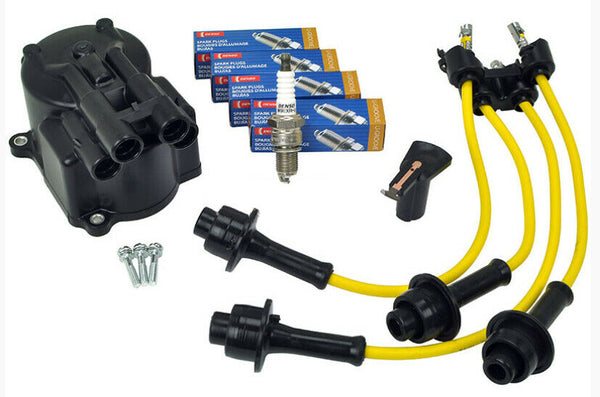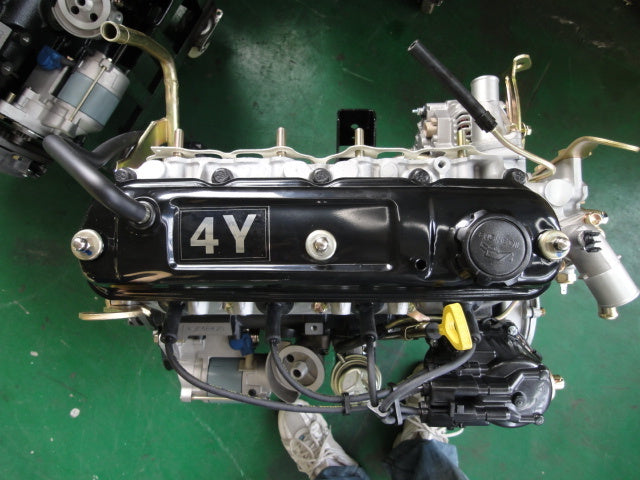The History and Evolution of the 4Y Engine in Automotive Engineering
The History and Evolution of the 4Y Engine in Automotive Engineering
Blog Article
Why the Engine Is the very best Choice for Efficiency and Efficiency in Your Car
The engine continues to be an essential component in automobile layout, mostly due to its considerable impact on both performance and effectiveness. As developments in modern technology enable smaller sized engines to supply amazing power while maximizing fuel economic climate, the assimilation of attributes such as turbocharging and hybrid systems ends up being increasingly important. These advancements not just enhance driving experience however additionally address environmental problems. However, the concern emerges: how do these aspects integrate to redefine our understanding of auto efficiency? Discovering this equilibrium discloses deeper insights into the future of engine design.
Comprehending Engine Types
Understanding the various kinds of engines is essential for enhancing performance and efficiency in automotive design. The key engine kinds consist of interior combustion engines (ICE), electric engines, and crossbreed systems, each offering distinctive advantages and limitations.
Internal burning engines, which can be additional categorized right into gas and diesel variations, rely upon the combustion of gas to produce power. Fuel engines generally provide greater RPMs and much better acceleration, while diesel engines are recognized for their torque and fuel efficiency, making them ideal for sturdy applications.
Electric engines, on the other hand, make use of electric motors powered by batteries or fuel cells. They supply immediate torque delivery, causing smooth velocity and lower exhausts. The performance of electrical engines is considerably greater than that of ICEs, making them a prominent choice for eco-conscious customers.
Hybrid systems incorporate both interior burning and electric engines, leveraging the toughness of both innovations. They maximize fuel intake by utilizing electrical power at lower rates and switching to gas or diesel for higher rates or much heavier lots.
Selecting the appropriate engine type is essential for accomplishing wanted performance metrics and ecological sustainability in modern vehicle engineering.
The Effect of Engine Dimension
Engine size frequently plays a critical function in figuring out an auto's efficiency and efficiency. Generally measured in liters or cubic centimeters, engine size straight influences the power result and torque features of a lorry.
Nonetheless, increased engine size frequently correlates with decreased fuel efficiency. Larger engines take in more fuel, resulting in higher emissions and operational prices. Consequently, manufacturers should balance the demand for power with the need for fuel economy. Smaller engines can deliver ample efficiency for daily driving while promoting far better effectiveness, making them a popular choice in compact and mid-size automobiles.
Additionally, improvements in engine style, such as turbocharging and direct fuel injection, permit smaller engines to attain power degrees comparable to their bigger counterparts. This fad highlights the relevance of not entirely concentrating on engine size however also taking into consideration general vehicle style and technology (4y engine). Eventually, the influence of engine size on efficiency and efficiency highlights the demand for consumers to analyze their particular driving choices and needs when choosing a vehicle
Advanced Engine Technologies
Developments in engine modern technologies have considerably improved the landscape of auto efficiency and efficiency, structure upon the fundamental principles established by engine size. Significantly, improvements such as turbocharging and straight fuel injection have actually enabled smaller sized engines to supply power degrees formerly connected with larger equivalents. Turbochargers press air getting in the engine, enabling enhanced power outcome without an equivalent rise in engine dimension, while straight shot optimizes fuel shipment, why not check here improving combustion effectiveness.
Furthermore, variable valve timing systems have emerged as an important modern technology, permitting engines to adjust valve operation based on driving problems. This flexibility special info boosts both efficiency during acceleration and fuel efficiency during cruising. Hybrid and electrical engine modern technologies better highlight the change in vehicle style, combining traditional inner combustion engines with electric motors to make the most of efficiency while reducing exhausts.
Moreover, developments in materials scientific research have actually resulted in lighter, a lot more long lasting engine components, further boosting performance and longevity. The assimilation of sophisticated electronics and engine control devices likewise allows for real-time adjustments, making sure optimal performance throughout various problems. Collectively, these innovative engine innovations not only enhance vehicle efficiency however additionally add to an extra sustainable automotive future, showing the ongoing development of engine design.
Harmonizing Power and Efficiency
Striking an equilibrium between power and performance is important in modern vehicle layout as makers look for to meet significantly rigid emissions guidelines while satisfying consumer need for efficiency (4y engine). The difficulty hinges on optimizing engine attributes to supply durable power outcome without compromising fuel economic situation
To accomplish this equilibrium, designers employ different approaches, such as turbocharging, which enhances engine power by requiring in more air, permitting for a smaller engine displacement that enhances gas performance. Variable valve timing technologies likewise play a substantial role, enabling engines to adjust their performance qualities based upon driving problems, therefore enhancing both power and efficiency.
Additionally, improvements in products and making techniques have caused lighter engine parts, which lower total vehicle find out weight and improve fuel efficiency without compromising power. Hybrid technologies have also become a practical service, integrating standard interior combustion engines with electric powertrains to offer a boost in performance while maintaining reduced exhausts.

Future Fads in Engine Style

Additionally, the development of sophisticated materials, such as lightweight compounds and high-strength alloys, is readied to reinvent engine components. These products not just decrease weight yet also enhance thermal performance, thus maximizing performance. Furthermore, manufacturers are checking out variable compression proportions, allowing engines to adapt to various driving problems, enhancing both power outcome and gas economy.
Additionally, the surge of artificial intelligence and artificial intelligence in engine style is enabling predictive upkeep and real-time efficiency optimization. This technology can lead to engines that self-adjust for optimal performance based on driving patterns.

Verdict
In verdict, the engine works as a vital component in attaining optimal performance and efficiency in modern cars. Advanced innovations, such as turbocharging and crossbreed systems, improve power outcome while lessening gas intake and exhausts. The interaction in between engine dimension and style proceeds to progress, driving technologies that stabilize electrifying performance with ecological sustainability. As vehicle engineering progresses, the focus on developing reliable, effective engines will certainly stay vital fit the future of transportation.
Furthermore, advancements in engine layout, such as turbocharging and straight fuel shot, enable smaller engines to attain power levels comparable to their bigger counterparts.Innovations in engine modern technologies have actually considerably reshaped the landscape of auto performance and efficiency, structure upon the foundational principles developed by engine dimension. Turbochargers compress air getting in the engine, enabling for increased power result without a matching increase in engine size, while straight injection maximizes fuel delivery, improving burning performance.
Hybrid and electrical engine technologies better illustrate the change in automotive layout, combining standard internal combustion engines with electrical motors to optimize efficiency while minimizing emissions.
Collectively, these sophisticated engine modern technologies not only enhance vehicle performance however additionally contribute to a much more lasting automotive future, showing the recurring evolution of engine style. (4y engine)
Report this page